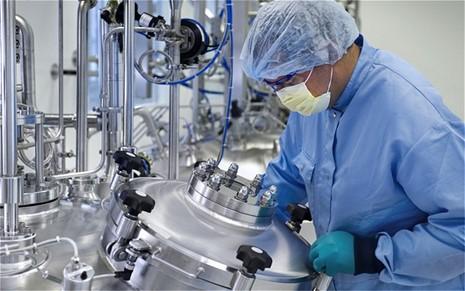Pharmaceutical companies are known to produce essential medications that cure, vaccinate from, and alleviate the symptoms of diseases that plague humankind. There are two angles of significant evolution within this giant industry that are co-occurring, especially in light of the present-day COVID-19 pandemic times. In this article, we discuss these two pharmaceutical industry changes, the types of emerging companies as a result of these changes, and the types of medications that come from these emerging companies.

First, there is the scientific layer – many pharmaceutical companies are shifting their focuses to drugs collectively known as “biologics.” These medications are manufactured in, extracted from, or at least semi-synthesized from biological sources rather than traditionally believed to be from chemical backgrounds. These living sources can be human, animal, plant, fungi, or even microbial. Examples include vaccines, blood, blood parts, allergenic, somatic cells, gene therapies, tissues, recombinant therapeutic protein(s), and living medicines used in cell therapies.
Second, there is the business layer – many pharmaceutical companies are shifting their value chains towards using outsourced contract services rather than producing their medications in-house. Known mainly as biopharma Contract Manufacturing Organizations (CMO’s), these companies provide many advantages (and also some potential disadvantages) but significantly benefit biopharmaceutical companies by hedging the financial risk in spending capital on the manufacturing capabilities of a drug that may end up proving not effective enough to warrant that initial investment, to begin with.
These companies originally were known solely as CMO’s and served mainly as external manufacturing partners for small and mid-sized biotechnology and pharmaceutical companies. However, the financial crisis of 2007-2008 brought about increased consolidation as a result of private equity investment into the substantial growth and more qualified management. These now larger CMO’s began offering more holistic value chain services, so they began to be called CDMO’s (Contract Development and Manufacturing Organizations). Some currently important biopharma contract manufacturing partners to know are:
– BioVectra
o Headquarters location: Charlottetown, Canada
o Present market capitalization: N/A (private company)
– Cambrex
o Headquarters location: East Rutherford, New Jersey, USA
o Present market capitalization: N/A (private company)
– Catalent
o Headquarters location: Somerset, New Jersey, USA
o Present market capitalization: $14.10 billion
– CordenPharma
o Headquarters location: Boulder, Colorado, USA
o Present market capitalization: N/A (private company)
– Fujifilm Diosynth Biotechnologies
o Headquarters location: Morrisville, North Carolina, USA
o Present market capitalization: $19.56 billion (Fujifilm Holdings Corporation)
– GSK Contract Manufacturing
o Headquarters location: Brentford, United Kingdom
o Present market capitalization: $186.85 billion (GlaxoSmithKline)
– Lonza Bioscience
o Headquarters location: Basel, Switzerland
o Present market capitalization: 42.19 billion CHF
– Pfizer CentreOne
o Headquarters location: New York, New York, USA
o Present market capitalization: $202.16 billion (Pfizer)
– Samsung Biologics
o Headquarters location: Incheon, South Korea
o Present market capitalization: 45.52 trillion KRW
– Thermo Fisher Scientific
o Headquarters location: Waltham, Massachusetts, USA
o Present market capitalization: $172.10 billion
There are many different types of biologics that increasingly robust biopharma contract manufacturing currently produces. However, they can be broken down into four major classes: extracted from living systems, created by recombinant DNA, vaccines, and gene therapy. In the rest of this article, we’ll elaborate on these four classes of what we now call biologics.
Many of the oldest forms of biologics are from the bodies of animals and even humans. Notable ones include whole blood (and blood components), organ and tissue transplants, step cell therapies, passive immunization antibodies, human breast milk, fecal microbiota, and human reproductive cells. Owing partially to their age, some of these biologics originally extracted from animals are now more commonly produced through recombinant DNA technology, insulin being an example.
Biologics from recombinant DNA methods can be broken down into three types: substances very similar to the body’s own key signaling proteins, monoclonal antibodies, and receptor constructs (also known as fusion proteins). Examples include blood factors, thrombolytic agents, hormones, haemopoietic growth factors, interferons, interleukin-based products, vaccines, monoclonal antibodies, and other additional products such as tumor necrosis factor and therapeutic enzymes.
Vaccines are biologics that provide active (versus passive) acquired immunity to a particular infectious disease. They usually contain an agent that mimics a disease-causing microorganism, such as its weakened or killed form, its toxins, or one of its surface proteins, and stimulates the body’s immune system to recognize it as a threat, destroy it, and destroy any of the microorganisms associated with it that may be encountered in the future. They can be further classified as prophylactic (ones that prevent or ameliorate the effects of future infection, such as influenza) or therapeutic (ones that fight a disease that has already occurred, such as cancer).
Gene therapy often involves artificially manipulating a virus to produce a desirable piece of genetic material that may end up itself making essential proteins. This is accomplished by high-jacking the viruses own host genome high-jacking mechanisms to at least temporarily (and sometimes permanently) integrate that desirable genetic material production into host protein production mechanisms. Viruses that have been used in this way include retroviruses, adenoviruses, herpes simplex, vaccinia, and adeno-associated virus.
In conclusion, biologics and outsourced contract manufacturing are two trends observed in the pharmaceutical industry at large. The COVID-19 pandemic has accelerated this evolution, as the emergence for necessary treatments has made vaccines and large-scale production even more necessary than before. These biopharma contract manufacturing organizations (CMO’s) have increasingly come to be known as CDMO’s (which stands for Contract Development and Manufacturing Organization), some noteworthy ones listed above, due to their more integrated offerings. This biopharma contract manufacturing produces several different types of biologics, which can be broken down into four major classes: extracted from living systems, produced by recombinant DNA, vaccines, and gene therapy.

